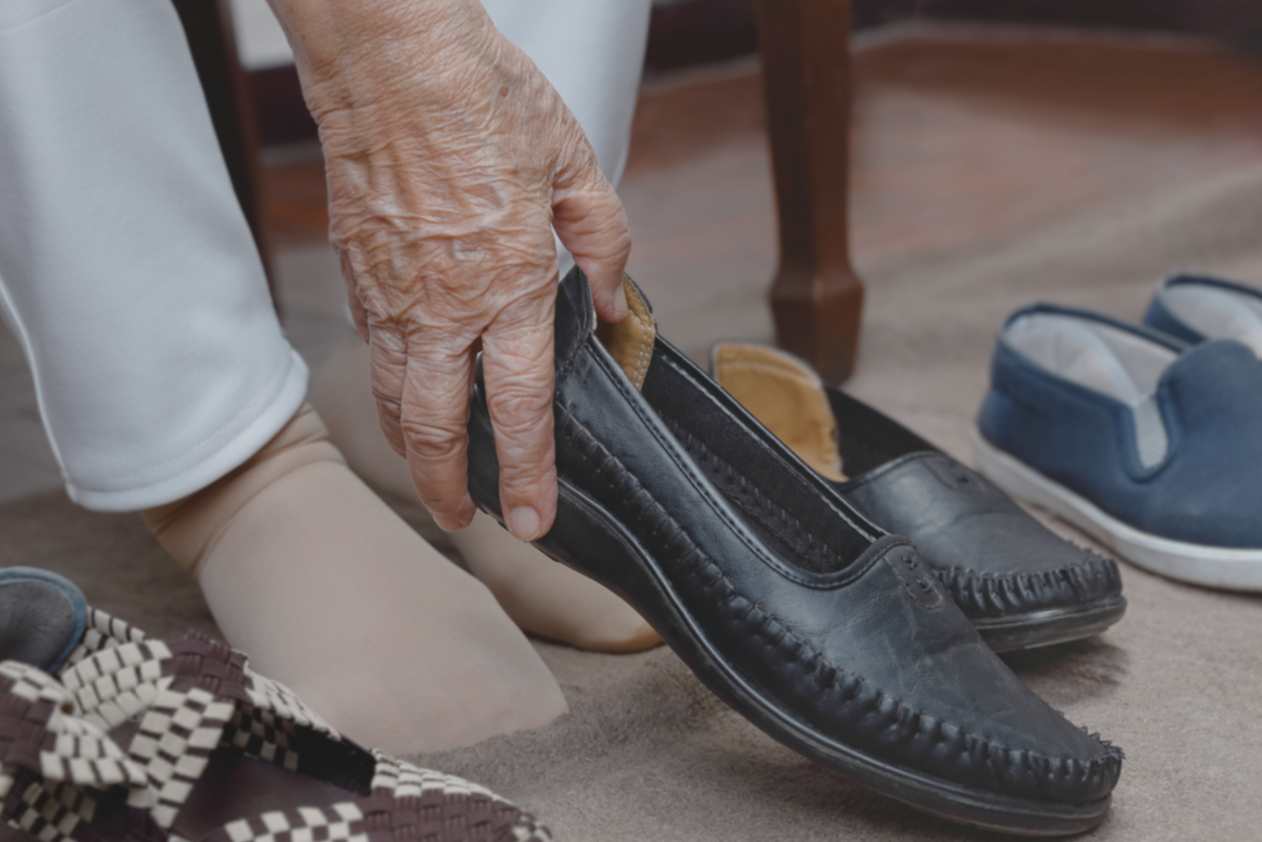As we age, our feet undergo numerous changes that can impact mobility, comfort, and overall foot health. Many people don’t realize that their shoe needs evolve over time, requiring adjustments in fit, support, and cushioning. Understanding how aging affects your feet can help you choose the right footwear to keep you moving comfortably for years to come.
Common Foot Changes with Age
1. Loss of Fat Padding
Over time, the natural cushioning in the soles of your feet begins to thin. This loss of fat padding reduces shock absorption, making it more uncomfortable to walk, especially on hard surfaces. Without adequate support, you may experience pain in the heels and balls of your feet.
2. Decreased Flexibility and Joint Changes
The ligaments and tendons in your feet lose elasticity as you age, leading to stiffness and reduced range of motion. Arthritis can also develop, particularly in the toes and midfoot, causing discomfort and limiting mobility. Stiffness in the feet can alter your gait and make it more difficult to find comfortable shoes.
3. Changes in Foot Shape and Size
Yes, your feet can change size as you get older! The arches may flatten, leading to longer and wider feet. Additionally, swelling (edema) becomes more common, especially later in the day. Many people find they need a half or full size larger in shoes as they age.
4. Increased Risk of Foot Conditions
Aging increases the likelihood of developing foot conditions such as bunions, hammertoes, plantar fasciitis, and neuropathy. These issues require footwear with proper support, a roomy toe box, and cushioning to reduce pressure on sensitive areas.


5. Balance and Stability Issues
With age, the risk of falls increases due to reduced muscle strength, joint instability, and changes in sensation. Wearing shoes with proper arch support, grip, and stability features can help prevent slips and falls, providing much-needed security with every step.
Choosing the Right Shoes as You Age
1. Prioritize Cushioning and Support
Shoes with ample cushioning can help compensate for the loss of natural fat padding. Look for models with shock-absorbing midsoles, like those featuring EVA or gel-based cushioning. Arch support is also essential to prevent overpronation and reduce strain on your feet.
2. Opt for a Roomy Toe Box
Since foot shape can change over time, it’s important to choose shoes that provide enough space for your toes to move naturally. A wide toe box can prevent irritation and accommodate bunions or other foot conditions.
3. Look for Adjustable Features
Shoes with adjustable straps or laces allow for a customizable fit, which is particularly helpful for those experiencing foot swelling throughout the day. Slip-on shoes may seem convenient, but they should still offer a secure fit to avoid slipping inside the shoe.
4. Choose Stability and Traction
To reduce fall risks, select shoes with a firm heel counter and a non-slip outsole. Stability shoes or those with mild motion control features can also improve balance and alignment.
5. Get Your Feet Measured Regularly
Since foot size can change over time, it’s important to have your feet measured at least once a year. Many people continue wearing the same shoe size for decades without realizing their feet have grown or widened.
Aging may bring changes to your feet, but the right footwear can make all the difference in maintaining comfort, mobility, and overall well-being. By understanding these changes and adjusting your shoe choices accordingly, you can keep your feet healthy and pain-free for years to come. Whether you’re walking for exercise, running errands, or simply enjoying daily activities, supportive and properly fitted shoes are essential for aging gracefully—one step at a time.

